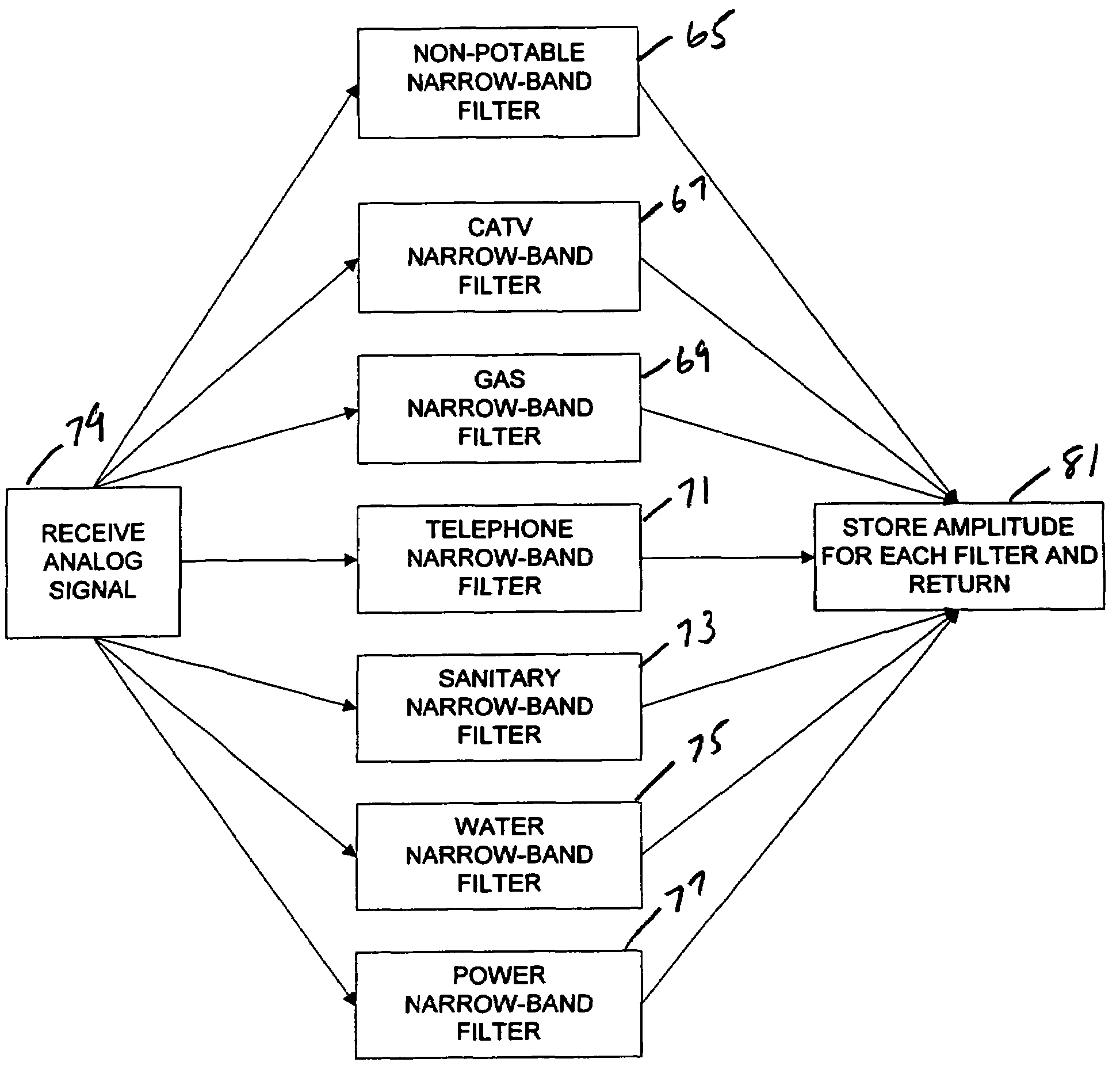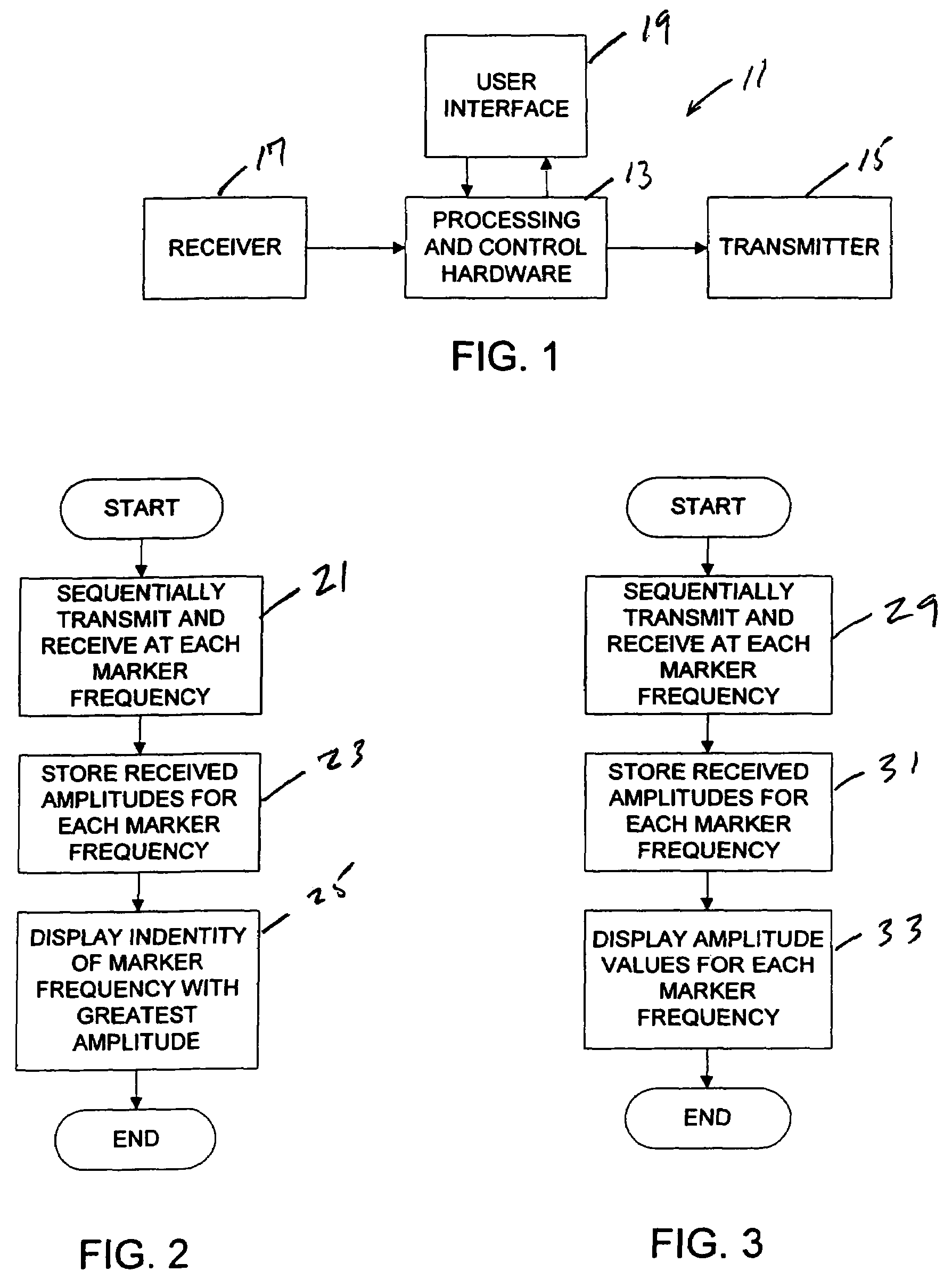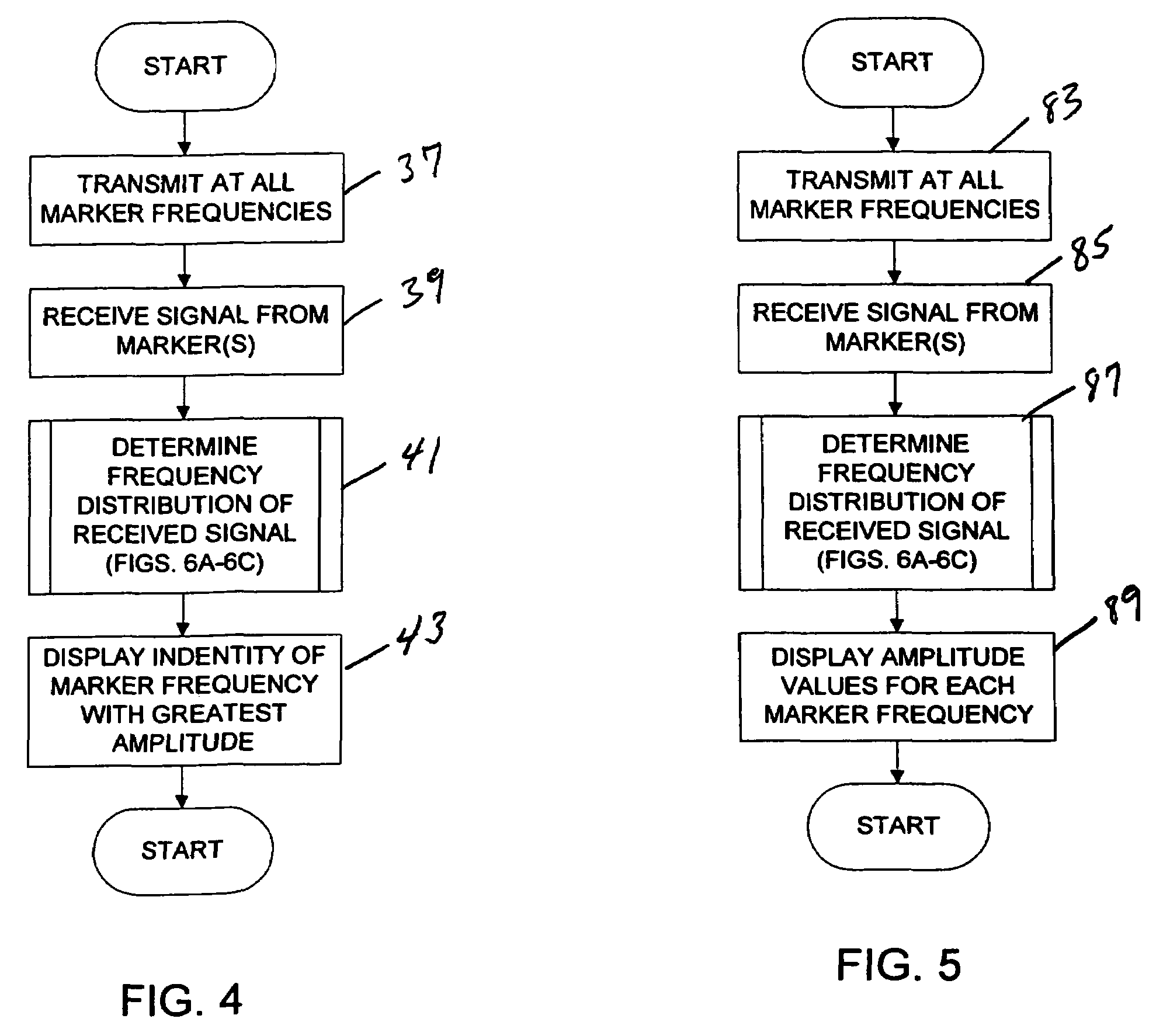Method of and system for rapidly locating all passive underground electronic marker types
- Summary
- Abstract
- Description
- Claims
- Application Information
AI Technical Summary
Benefits of technology
Problems solved by technology
Method used
Image
Examples
second embodiment
[0027]Referring now to FIG. 3, there is illustrated a flowchart depicting the general operation of a marker location method. FIG. 3 processing is similar to the processing described above with reference to FIG. 2, except that the display operation at block 33 displays an amplitude value for each detected marker frequency. Thus, as indicated at block 29, processing and control hardware may operate transmitter 15 and receiver 17 to transmit and receive, respectively, sequentially at each marker frequency. As indicated at block 31, processing and control hardware 13 may determine and store the amplitude of the return signal received by receiver 17 at each marker frequency. Then, as indicated at block 33, the locator may display the amplitude values for each marker frequency.
[0028]An example of a display according to the FIG. 3 embodiment is illustrated in FIG. 7, in which a display screen is generally indicated at 35. The exemplary display screen 35 displays numerical and graphical ind...
third embodiment
[0029]Referring now to FIG. 4, there is illustrated a flowchart depicting the general operation of a marker location method. As indicated at block 37, transmitter 15 may transmit simultaneously at all marker frequencies. As indicated at block 39, receiver 17 may receive a signal returned from one or more markers. As indicated generally at block 41, processing and control hardware 13 may determine a frequency distribution of the received signal. As set forth below, various frequency distribution determination processes are described in detail with respect to FIGS. 6A–6C. After determining the frequency distribution of the received signal, processing and control hardware 13 may operate the display to display the identity of the marker type with the greatest amplitude, as indicated at block 43. An example of a display according to FIG. 4 processing is illustrated in FIG. 8.
[0030]Referring now to FIG. 6A there is illustrated a synchronous detection process for determining a response fre...
fourth embodiment
[0034]Referring now to FIG. 5, there is illustrated a flowchart depicting the general operation of a marker location method. Operation of the FIG. 5 embodiment is similar to that set forth above with reference to FIG. 4, except that an amplitude value for each marker frequency may be displayed as indicated at block 89. Thus, as indicated at block 83, transmitter 15 may transmit simultaneously at all marker frequencies. As indicated at block 85, receiver 17 may receive a return signal from one or more markers. As indicated generally at block 87, processing and control hardware 13 may determine a frequency distribution of the received signal; as set forth above, various frequency distribution determination processes are described with specific reference to FIGS. 6A–6C. After determining the frequency distribution of the received signal, processing and control hardware 13 may operate the display to display an amplitude value for each marker frequency as indicated at block 89. An exampl...
PUM
 Login to View More
Login to View More Abstract
Description
Claims
Application Information
 Login to View More
Login to View More - R&D
- Intellectual Property
- Life Sciences
- Materials
- Tech Scout
- Unparalleled Data Quality
- Higher Quality Content
- 60% Fewer Hallucinations
Browse by: Latest US Patents, China's latest patents, Technical Efficacy Thesaurus, Application Domain, Technology Topic, Popular Technical Reports.
© 2025 PatSnap. All rights reserved.Legal|Privacy policy|Modern Slavery Act Transparency Statement|Sitemap|About US| Contact US: help@patsnap.com



